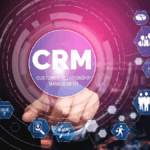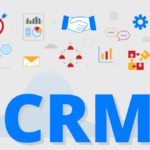In today’s digital-first business environment, integrating your CRM (Customer Relationship Management) system with marketing tools isn’t just a nice-to-have—it’s a game-changer. This integration helps align your sales and marketing teams, provides a unified view of the customer journey, and ensures data-driven campaigns that convert.
If you’re ready to improve lead nurturing, streamline communication, and supercharge your ROI, here’s a clear step-by-step guide on how to successfully integrate CRM with your marketing tools.
Define Your Integration Goals
Before choosing tools or starting technical work, clearly identify your objectives.
Ask yourself:
- Do you want to improve lead scoring?
- Are you aiming for better customer segmentation?
- Do you need automated email campaigns based on CRM data?
Having well-defined goals helps you choose the right platforms and track success.
Choose Compatible Tools
Your CRM and marketing tools must work well together. Look for native integrations or third-party connectors like Zapier, Make (Integromat), or APIs.
Popular CRM platforms:
- Salesforce
- HubSpot CRM
- Zoho CRM
- Microsoft Dynamics
- Freshsales
Top marketing tools:
- Mailchimp
- ActiveCampaign
- Marketo
- Constant Contact
- Google Ads / Facebook Ads
Check for supported integrations on both platforms. Native integrations are often easier and more reliable than custom setups.
Connect the Tools
Depending on the platforms, you’ll have different integration options:
A. Native Integration (One-Click Setup):
For example, HubSpot CRM and Mailchimp have built-in integrations. You just need to authorize access and set sync rules.
B. API Integration:
If native options are unavailable, developers can connect tools via APIs. This requires more technical expertise but offers maximum flexibility.
C. Middleware Tools:
Platforms like Zapier or Make allow no-code connections. Example:
- Trigger: New lead in CRM
- Action: Add contact to Mailchimp list
Sync Key Data Fields
Decide which data fields need to be shared between systems, such as:
- Contact name and email
- Lead source and status
- Engagement history (email opens, clicks, etc.)
- Purchase or subscription data
Set data mapping rules to avoid duplication or incorrect data syncs. Make sure fields match in both systems (e.g., date format, tags, categories).
Set Up Automation Workflows
Once the tools are integrated, it’s time to build automated marketing workflows using CRM data.
Examples:
- Welcome series for new leads from CRM
- Automated emails for abandoned carts
- Retargeting ads for cold leads
- Re-engagement campaigns for inactive contacts
Use segmentation and lead scoring to trigger the right messages at the right time.
Ensure Data Privacy and Compliance
Integration increases data exchange, so compliance with laws like GDPR, CCPA, or HIPAA is critical.
Tips:
- Use secure connections (SSL, encrypted APIs)
- Get user consent for data sharing
- Provide opt-out/unsubscribe options
- Regularly audit data for accuracy and security
Monitor and Optimize Performance
Integration isn’t a “set it and forget it” process. Use analytics dashboards to track performance and optimize continuously.
Monitor:
- Conversion rates by campaign
- Engagement metrics (open/click rates)
- Lead movement through the sales funnel
- ROI of automated campaigns
Adjust your workflows, messages, or targeting based on what the data tells you.
Conclusion
When done right, integrating your CRM with marketing tools unlocks incredible power: real-time customer insights, automated campaigns, and higher conversion rates. It creates a seamless experience across touchpoints and ensures your marketing and sales teams are always in sync.









